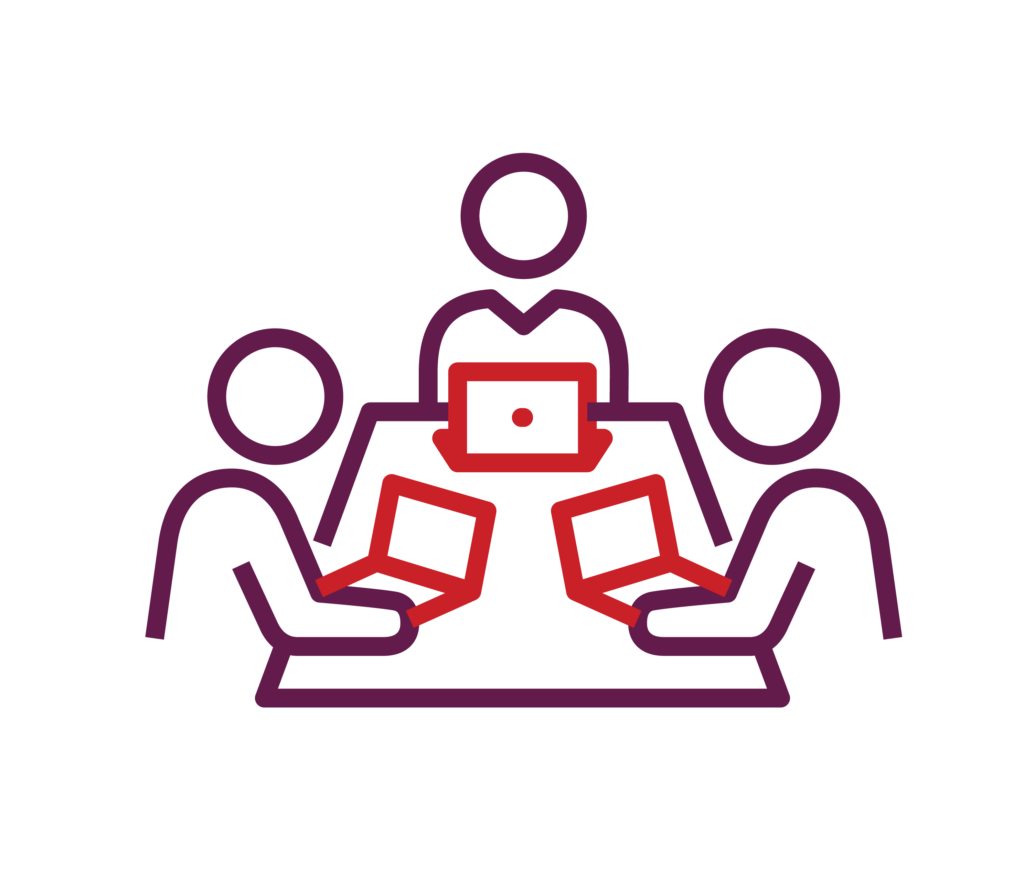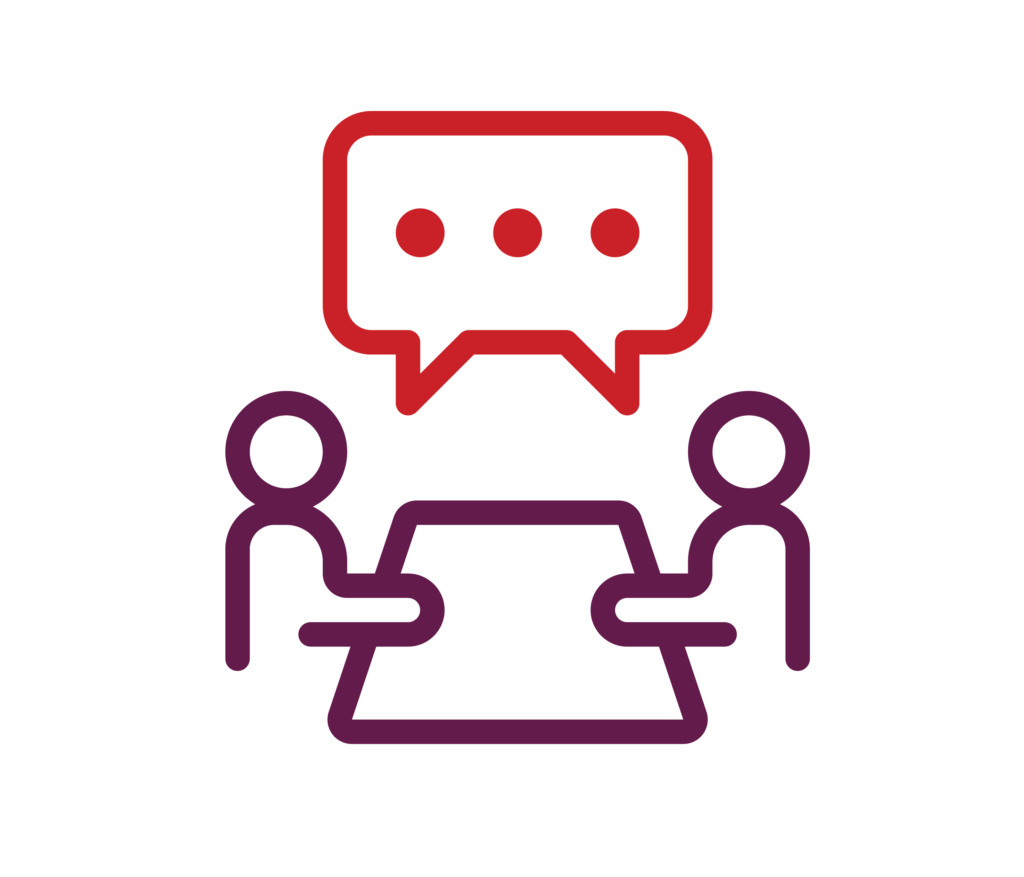focus groups
By Elizabeth Armet, Senior Director, Research Strategy
Qualitative research is ideally suited to gain a deeper understanding of the opinions, motivations, frustrations, and priorities of your target audience. There are numerous ways to achieve this level of understanding, primarily through focus groups and in-depth interviews (IDIs). Both methods can be highly effective at uncovering and unlocking valuable insights.
Focus groups
Using a predetermined set of questions that allow ample room to dive into previously uncharted yet relevant issues, a professional moderator encourages and manages an open discussion and the cross-pollination of ideas among the participants. While the size of the group can vary, most groups include 6-10 participants. The group may be conducted either in-person at a professional focus group facility or at other venues such as at a conference or convention; or else online. The number of groups depends on the audience type and the goal of the research; but in general, two groups are better than one. The second group serves as a confirmation (or dissension) of the first group’s findings and also provides the opportunity to delve into any additional issues or ideas that unexpectedly came up during the first group.
In-depth interviews (IDIS)
In-depth interviews are one-on-one discussions conducted by phone or an online platform such as Zoom or Google Meet. Like focus groups, they also follow a predetermined yet flexible guide and may last anywhere from 20-60 minutes. The total number of IDIs may vary, and depends on the audience type, with 10-15 interviews per segment as a reasonable amount. IDIs are a great tool when targeting a very specific decision-maker or executive that is harder to reach. The one-on-one format of IDIs is also well suited to topics of a sensitive nature, or when the participant seeks to avoid sharing information with a possible competitor.
Which method do you choose?
Typically, the specific circumstances of your research project will dictate whether focus groups, in-depth interviews, or perhaps even a combination, is most appropriate.
Focus groups are recommended for the following situations:
- Eliciting deeply held opinions and beliefs
- Obtaining detailed information from a small and potentially diverse group of individuals
- Evaluating a concept, message or ad
- Assessing a product or service
On the other hand, IDIs are recommended over focus groups in the following situations:
- The research requires the input of decision-makers from competing firms (who are often unwilling to talk openly in front of one another).
- The target audience is comprised of very high-level and/or extremely busy professionals, such as corporate executives or medical specialists, and may be unwilling to travel to a research facility at a specific time.
- The discussion topics are sensitive or personal in nature.
It is important that you and your research firm weigh each option carefully when determining the most effective qualitative method for your particular needs. Indeed, some studies may benefit by utilizing both approaches, based on the nature of the target audience. Market Connections works together with our clients to create the best strategy to get the answers they need with qualitative research.
Qualitative research is ideally suited to gain a deeper understanding of the opinions, motivations, frustrations, and priorities of your target audience. There are numerous ways to achieve this level of understanding, chiefly through focus groups and in-depth interviews (IDIs). Both methods can be highly effective at uncovering and unlocking valuable insights.
 Focus Groups
Focus Groups
Following a pre-determined set of questions, but with ample room to dive into previously uncharted yet relevant issues, a professional moderator encourages and manages an open discussion and the cross-pollination of ideas among the participants. While the size of the group can vary, a recommended amount typically involves 6-10 participants. The group may be conducted either in-person at a professional focus group facility or at other venues such as at a conference or convention; or else online. The number of groups depends on the audience type; but in general, two groups are better than one. The second group serves as a confirmation (or dissension) of the first group’s findings and provides identification of additional issues and ideas on which to probe.
In-Depth Interviews (IDIs)
In-depth interviews are one-on-one discussions conducted by phone or in-person. Like focus groups, they also follow a predetermined yet flexible guide and may last anywhere from 20-60 minutes. The total number of IDIs may vary, and depends on the audience type, with 3-5 interviews per segment as a reasonable amount. IDIs are a great tool when targeting a very specific decision-maker or executive that is harder to reach. The one-on-one format of IDIs is also well suited to topics of a sensitive nature, or when the participant seeks to avoid sharing information with a possible competitor.
Which Method Do You Choose?
Typically, the specific circumstances of your research project will dictate whether focus groups, in-depth interviews, or perhaps even a combination, is most appropriate.
Focus groups are recommended for the following situations:
- Eliciting deeply held opinions and beliefs
- Obtaining detailed information from a small and potentially diverse group of individuals
- Evaluating a concept, message or ad
- Assessing a product or service
On the other hand, IDIs are recommended over focus groups in the following situations:
- The audience is limited and geographically dispersed.
- The research requires the input of decision-makers from competing firms (who are often unwilling to talk openly in front of one another).
- The target audience is comprised of very high-level and/or extremely busy professionals, such as corporate executives or medical specialists, and may be unwilling to travel to a research facility at a specific time.
- The discussion topics are sensitive or personal in nature.
It is important that you and your research firm weigh each option carefully when determining the most effective qualitative method for your particular needs. Indeed, some studies may benefit by utilizing both approaches, based on the nature of the target audience. Market Connections works together with our clients to create the best strategy to get the answers they need with qualitative research. Contact us to learn more.




